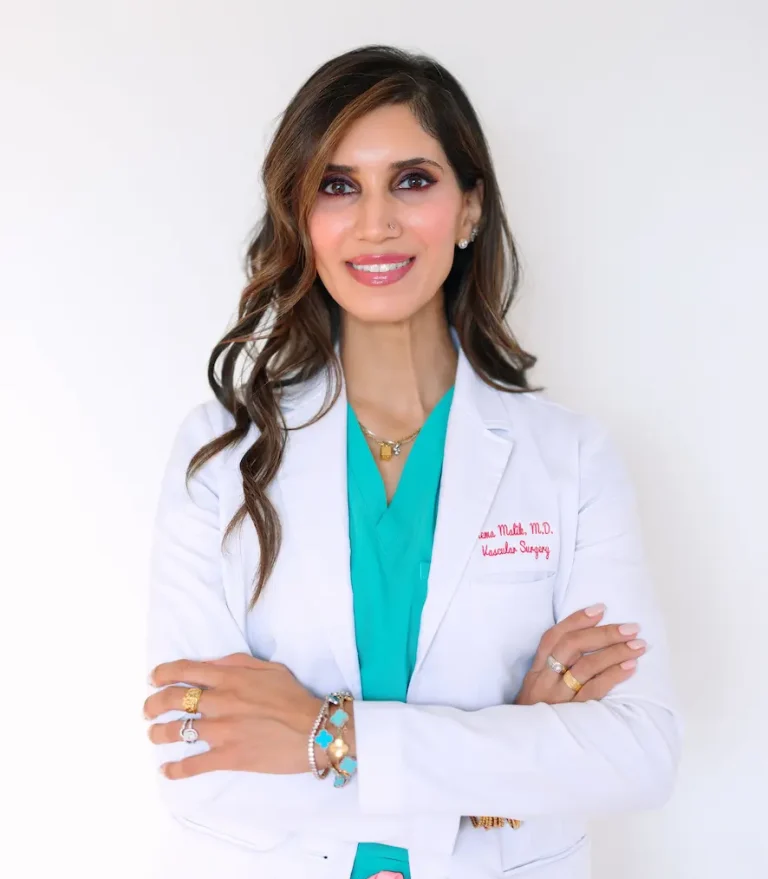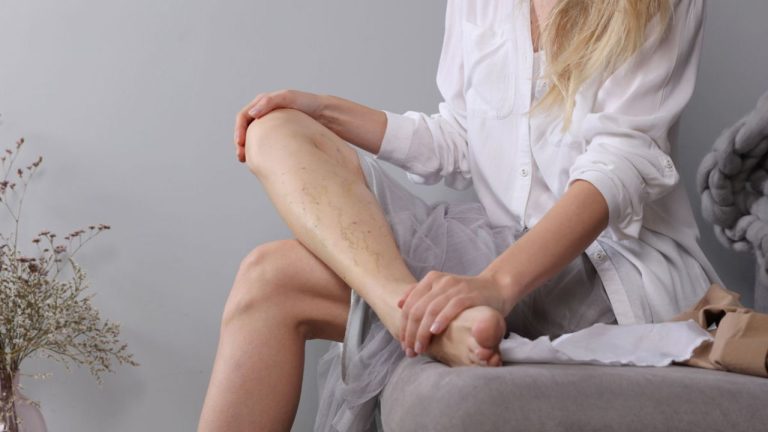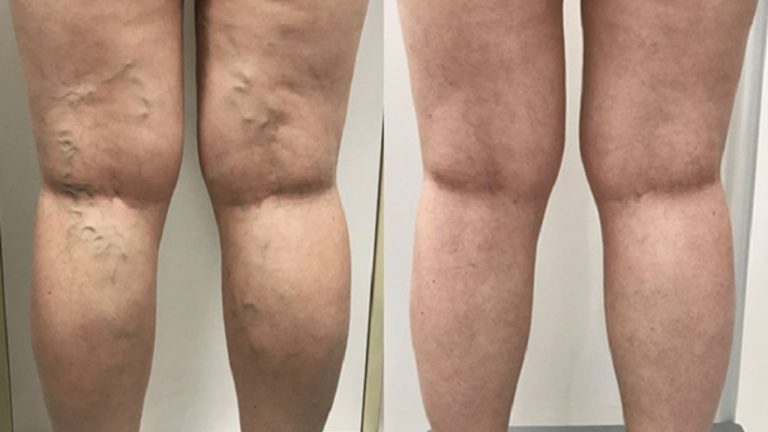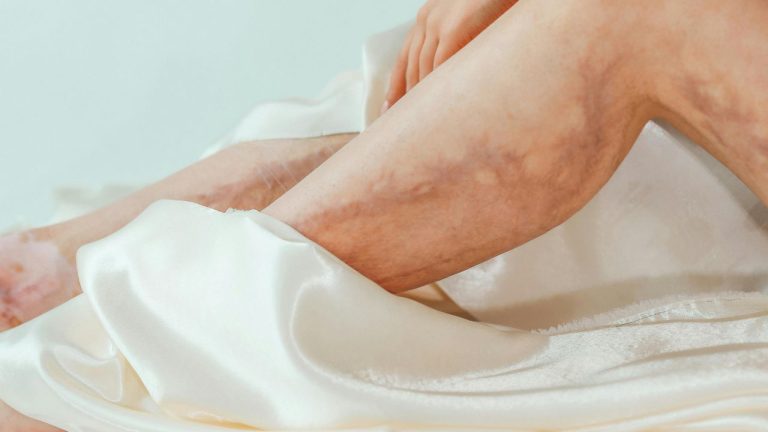Varicose veins can lead to aching, throbbing, and a heavy feeling in the legs, making daily activities uncomfortable. While medical treatments may be necessary for severe cases, simple strategies like proper leg positioning, gentle exercise, and compression therapy can provide significant relief. This guide covers practical ways to manage varicose vein pain and promote healthier, more comfortable legs.
Ready to learn how to ease your leg discomfort? Let’s go!
How to Relieve Varicose Vein Pain
Varicose veins occur when the valves inside the veins weaken, causing blood to pool in the lower legs. This leads to swelling, heaviness, throbbing, burning, and sometimes itching. Pain often worsens after prolonged standing or sitting and can interfere with daily activities.
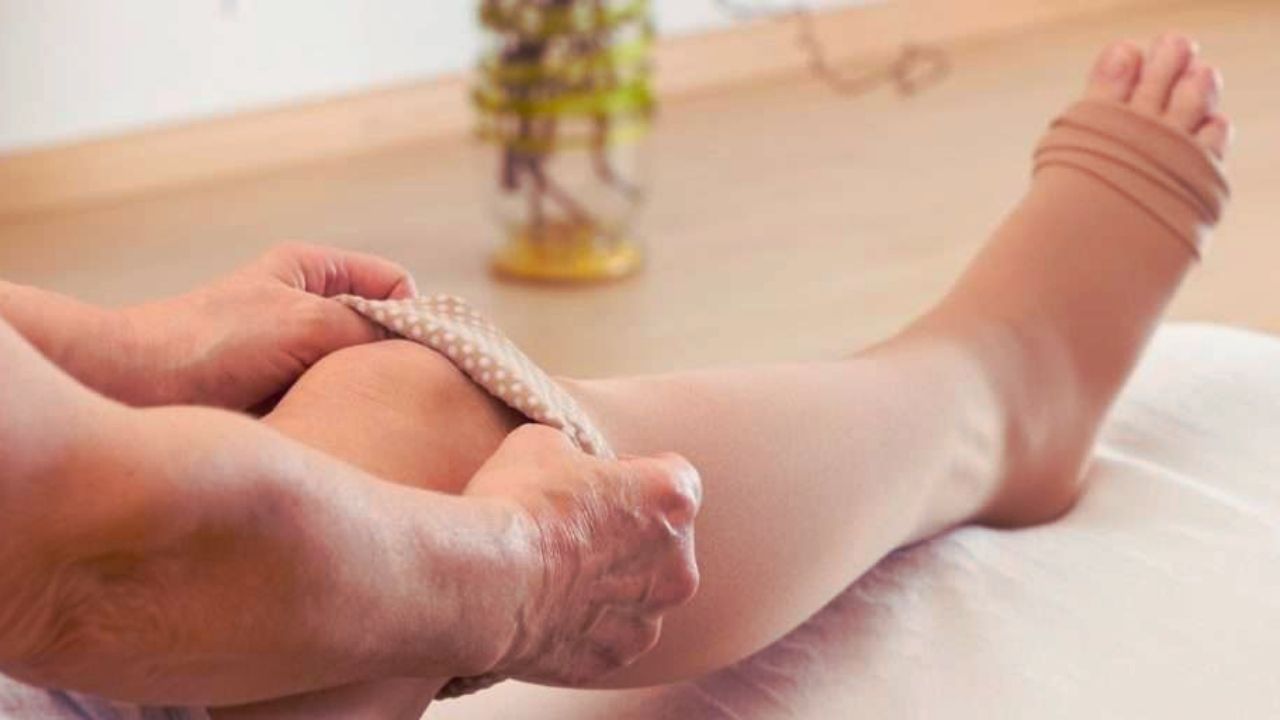
1. Step up and Positioning
Raising your legs above the heart level helps blood flow back to the heart and reduces swelling. Techniques include:
- Lying on your back with a wedge pillow or stacked pillows under your calves and feet.
- Elevating your legs for 15–20 minutes several times a day.
- Avoid positions that compress veins, such as crossing your legs or curling tightly.
2. Movement and Exercise
Physical activity encourages circulation and prevents blood from pooling in the legs:
- Short walks, gentle leg stretches, or calf raises during the day.
- Avoid sitting or standing in one position for long periods.
- Light aerobic exercises, such as swimming or cycling, can strengthen leg muscles and support vein function.
3. Compression Therapy
Wearing compression stockings provides gentle pressure to the legs, helping veins move blood efficiently. Benefits include:
- Reduced swelling and heaviness.
- Less pain during daily activities.
- Improved circulation during long periods of standing or travel.
4. Cold Therapy
Applying a cold compress or cool towel can relieve inflammation and numb discomfort:
- Use a cold pack wrapped in a cloth for 10-15 minutes at a time.
- Avoid direct ice on the skin to prevent frostbite.
5. Massage and Leg Care
A gentle upward leg massage can stimulate blood flow and relieve soreness:
- Massage from the ankles toward the knees and thighs.
- Combine with hydration to improve circulation.
6. Lifestyle Adjustments
Simple changes in habits can significantly reduce discomfort:
- Wear comfortable, supportive shoes instead of high heels.
- Maintain a healthy weight to reduce pressure on leg veins.
- Stay hydrated and avoid excessive salt intake to prevent fluid retention.
Read Also: Why Do Varicose Veins Hurt?
When to See a doctor?
While mild discomfort from varicose veins can often be managed at home, certain symptoms may indicate complications or a more serious condition. Seek medical attention promptly if you notice:
- Severe or sudden leg pain.
- Swelling accompanied by redness, warmth, or tenderness.
- Skin changes such as ulcers, discoloration, or thickening.
- Rapid changes in leg appearance or sensation, including numbness or tingling.
How Doctors Treat Varicose Veins
When lifestyle changes and home remedies are not enough, medical treatment may be recommended. Doctors use several approaches depending on the severity of the varicose veins:
- Compression Therapy: Prescription-grade compression stockings may be recommended to improve circulation and reduce swelling.
- Sclerotherapy: A minimally invasive procedure where a solution is injected into smaller varicose veins, causing them to collapse and fade over time.
- Laser or Radiofrequency Ablation: Non-surgical techniques that use heat energy to close off larger varicose veins, redirecting blood to healthier veins.
- Vein Stripping and Ligation: Surgical removal of severely damaged veins in extreme cases where other treatments are ineffective.
- Phlebectomy: A minor procedure where small varicose veins are removed through tiny incisions in the skin.
- Medication and Pain Management: In some cases, doctors may prescribe anti-inflammatory medications or topical treatments to relieve discomfort.
Doctors typically assess the patient’s symptoms, vein size, and overall health before recommending the most appropriate treatment. Regular follow-ups help monitor progress and prevent complications.
Tips to Relieve Varicose Vein Pain
Before we get into the details of each method, here are some practical tips you can start using immediately to ease discomfort and support vein health:
- Raise your legs above heart level several times a day to reduce swelling.
- Take short walks or do gentle leg stretches to improve circulation.
- Wear compression stockings as prescribed to support veins and reduce discomfort.
- Apply a cold compress for 10-15 minutes to ease inflammation.
- Perform gentle upward leg massages to stimulate blood flow.
- Avoid sitting or standing in one position for long periods.
- Wear comfortable, supportive shoes instead of high heels.
- Maintain a healthy weight to reduce pressure on leg veins.
- Stay hydrated and limit salt intake to prevent fluid retention.
- Adjust sleep positions to keep legs elevated and reduce nighttime discomfort.
Read Also: What Happens If a Varicose Vein Bursts Internally?
FAQ
Can exercise worsen varicose vein pain?
No, gentle exercise improves circulation and reduces swelling. Avoid high-impact activities if they increase discomfort.
How long should I elevate my legs daily?
15-20 minutes several times a day is effective for reducing swelling and pain.
Are compression stockings necessary?
Yes, if prescribed by a doctor, they support veins and relieve symptoms, especially during standing or travel.
Can massage help varicose veins?
A gentle upward leg massage can improve blood flow and reduce discomfort but avoid deep pressure directly on bulging veins.
When should I see a doctor?
Seek medical attention if pain is severe, sudden, or accompanied by swelling, redness, warmth, skin changes, or ulcers.
Conclusion
Varicose vein pain doesn’t have to hold you back. With leg elevation, gentle movement, compression therapy, and mindful lifestyle habits, you can significantly reduce discomfort and support healthy circulation. In more severe cases, medical treatment may be necessary, but early care and consistent attention make a world of difference.
Take gentle care of your legs, embrace small daily habits, and step forward confidently toward pain-free, energized days ahead!
